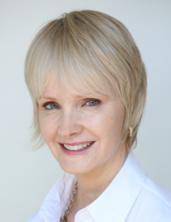 Like many venture firms founded before the last tech boom, the San Francisco-based outfit Hummer Winblad Venture Partners seemed, for a time, to be staring death in the face owing to the market’s implosion, uneven returns, and a drawn-out lawsuit with two major record labels over its 2000 investment in the now defunct file-swapping service Napster.
Like many venture firms founded before the last tech boom, the San Francisco-based outfit Hummer Winblad Venture Partners seemed, for a time, to be staring death in the face owing to the market’s implosion, uneven returns, and a drawn-out lawsuit with two major record labels over its 2000 investment in the now defunct file-swapping service Napster.
The 26-year-old firm made it through the to the other side, though, and today, it’s in seemingly good shape, newly rebranding itself as HWVP and, this morning, launching a snazzy new site to mark the occasion.
The changes are more than cosmetic. HWVP is, like other firms of its vintage, a lot smaller than it used to be. The firm once employed a deep bench of managing directors and associates. Now it employs three managing directors: Mitchell Kertzman, a serial CEO (Liberate Technologies, Sybase, Powersoft Corp.) who joined the firm 12 years ago; Lars Leckie, who joined the firm a decade ago and was promoted to managing director in 2011; and Steven Kishi, who has spent the last 20 years bouncing between Hummer Winblad and various operating roles. (Most recently, Kishi was VP of product management at the cloud services company Altiscale.)
Even firm cofounders John Hummer and Ann Winblad are no longer “managing directors” but are listed at the new site instead as “founding partners.”
The amount of capital that HWVP has to invest is far less, too. The firm closed its sixth fund with $201 million in late 2007, down from the $424 million it had raised for its fifth fund in 2000.
Leckie suggests the firm will look to close its next fund with between $105 million and $150 million. (Leckie declines to discuss HWVP’s specific fundraising plans, but he offers that he believes that “small, focused funds do the best by their investors,” saying he thinks that “$35 million to $50 million” per partner is ideal.)
The firm’s prospects would seem pretty promising. Though forced to retrench, HWVP has never veered from its core thesis of investing in enterprise software companies. And while it missed the consumer wave as a result, its bets look pretty prescient right now. For example, the firm was the first investor in the 11-year-old, SaaS-based sales platform InsideSales, which last month raised $60 million at a valuation north of $1 billion. (The company has raised $200 million altogether.)
That bet alone will “return our [sixth] fund,” says Leckie, who says that HWVP owns “two times what everyone else owns” of the company.
HWVP is also among the earliest investors in Five9, MuleSoft, and Birst, among others. Five9, a San Ramon, Ca.-based call center company, went public last year. (Its market cap is $272 million, as of this writing.) MuleSoft, the San Francisco-based integration platform for connecting enterprise applications in the cloud, has raised well over $100 million from investors, closing its last round of $50 million last year at a post-money valuation of $800 million. Meanwhile, Birst, a San Francisco-based business intelligence and analytics business, just raised $65 million in Series F funding last month, bringing its total funding to $156 million. (Leckie declined to discuss its valuation.)
Of course, mark-ups are one thing. Actual exits are another. It remains to be seen whether HWVP will see the profits it’s expecting, particularly given the widening gap between the number of richly valued late-stage, still-private companies and those going public.
Perhaps unsurprisingly, Leckie is highly optimistic about the firm’s odds. “We’re having a kick ass first quarter,” he tells StrictlyVC. “Valuations will fall where they fall. But it is a very good time to be quietly investing in enterprise and SaaS infrastructure.”
Luckily for HWVP, it’s been doing it for years.










